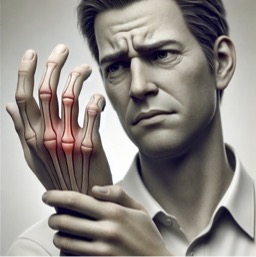Email : admin@mskdoc.co.nz | Phone : 02727 00100
Opening Hours : Mon-Friday : 10 AM – 4 PM
Email : admin@mskdoc.co.nz | Phone : 02727 00100
Opening Hours : Mon-Friday : 10 AM – 4 PM
Email : admin@mskdoc.co.nz | Phone : 02727 00100 | Opening Hours : Mon-Friday : 10 AM – 4 PM
By: Dr Zaid Matti
Musculoskeletal Medicine Specialist
Trigger finger, medically known as stenosing tenosynovitis, is a condition where one of your fingers gets stuck in a bent position and may suddenly straighten with a snap — like a trigger being pulled and released.
This happens when inflammation narrows the tendon sheath, restricting the smooth movement of the tendon responsible for finger flexion.

– Finger stiffness, especially in the morning
– A popping or clicking sensation during finger movement
– Tenderness or a small lump at the base of the affected finger
– Finger locking in a bent position, followed by a sudden straightening
– Repetitive gripping or hand use
– Diabetes mellitus
– Rheumatoid arthritis
– Age (common between 40–60 years)
– Gender (more common in women)
1. Non-Operative Treatments:
– Rest & Activity Modification: Avoid repetitive gripping or pinching tasks.
– Splinting: Immobilises the affected finger, allowing inflammation to settle.
> Evidence: Splinting is effective in early and mild cases. (Tarbhai et al., 2012)
2. Steroid Injection:
– A corticosteroid injection into the tendon sheath reduces inflammation.
– Effectiveness: 60–90% symptom resolution after the first injection.
> Reference: Fleisch et al., 2007
3. Platelet-Rich Plasma (PRP) Injection:
– PRP is an autologous blood-derived treatment rich in healing platelets.
– It aims to reduce inflammation and stimulate tendon healing.
– Ideal for patients who prefer biological therapy or do not respond well to steroids.
> Reference: Lee et al., 2020
4. Surgical Treatment:
– Indicated when conservative options fail.
– The procedure involves releasing the A1 pulley, allowing smooth tendon motion.
– Success rate: 95–100%. Recovery is often quick and uncomplicated.
> Reference: Ryzewicz & Wolf, 2006
| Treatment Option | Evidence-Based Summary |
|—————————-|—————————————————————–|
| Splinting | Effective for mild cases and early intervention (Tarbhai et al., 2012) |
| Steroid Injections | Strong first-line treatment with high success rates (Fleisch et al., 2007) |
| PRP Injections | Promising biological option; fewer systemic side effects (Lee et al., 2020) |
| Surgical Release | High success rate, low complication rate (Ryzewicz & Wolf, 2006) |
Your treatment should be based on:
✅ The severity of your symptoms
✅ Your medical history
✅ Your preferences — including interest in biological treatments
Discuss these options with your doctor to decide what’s best for you.
1. Fleisch SB, Spindler KP, Lee DH. Corticosteroid injections in the treatment of trigger finger: a level I and II systematic review. J Bone Joint Surg Am. 2007;89(8):1717–1725.
2. Ryzewicz M, Wolf JM. Trigger digits: principles, management, and complications. J Hand Surg Am. 2006;31(1):135–146.
3. Lee JH, Park YJ, Jin HK, et al. Clinical outcomes of platelet-rich plasma injections for trigger finger: a prospective case series. Arch Phys Med Rehabil. 2020;101(7):1176–1183.
4. Tarbhai K, Hannah S, von Schroeder HP. The effectiveness of night splinting for trigger finger in adults: a randomized controlled trial. J Hand Surg Eur Vol. 2012;37(7):676–682.